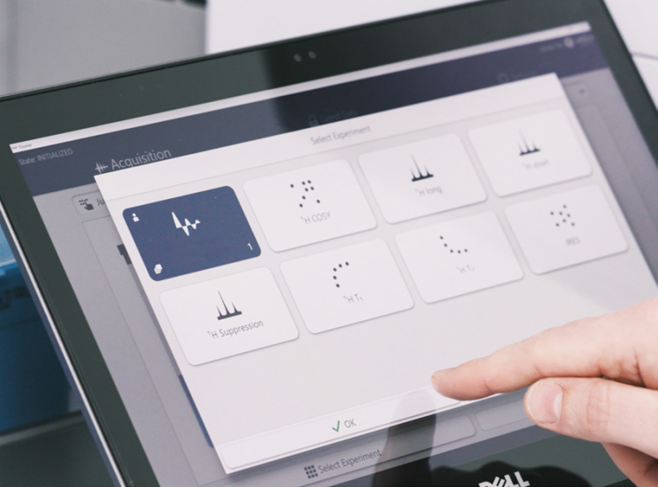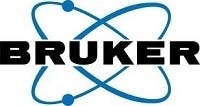In this interview, NewsMedical talks to Joerg Koehler about distributed lab topology and the solutions Bruker offers to advance R&D and manufacturing and facilitate various applications in a range of industries.
What key quality factors needed to be met when developing Bruker’s benchtop NMR system?
A strong focus for Bruker was to develop a benchtop NMR system that maintains the high-performance standards of our well-known floor-standing instruments. With decades of experience in this market, Bruker has established a reputation for quality, characterized by reproducibility, system stability, and adherence to these quality factors during the development and introduction of the benchtop system.
These factors include magnet stability, magnet homogeneity, result reproducibility, and user-friendliness. The goal is to cater to a wide range of users, allowing experts to utilize a diverse pulse program library within the industry-standard TopSpin software while enabling non-experts in NMR to obtain reliable results at the push of a button.
This reliability is crucial in industrial environments, as it ensures that the results are independent of the operator and can be trusted, regardless of who operates the system during any given shift.
What are the advantages of nuclear magnetic resonance technology compared to other analytical techniques?
Nuclear magnetic resonance (NMR) technology offers several advantages over other analytical techniques. Firstly, it is highly versatile, allowing for a wide range of substances and materials to be analyzed in a single analytics run.
NMR does not necessitate the use of compound-specific reference materials for quantification, making it a more convenient option. These benefits are applicable across various industrial value chains, providing a comprehensive end-to-end perspective.
The technology finds applications in research and development, facilitating product innovation through the utilization of sophisticated high-resolution instrumentation. Additionally, it has been adapted into benchtop instruments and smaller derivatives suitable for manufacturing environments.
This enables harmonized methods, as products designed with NMR analysis can seamlessly transition into production, supporting incoming goods control, process control, and final product quality control.

Image Credit: Bruker BioSpin
What is the aim of bringing Bruker’s benchtop NMR system into various manufacturing environments across the industry?
The benchtop NMR system from Bruker offers a range of end-to-end solutions. By utilizing these solutions, users can begin with a sample and obtain their analytical results, such as a detailed report or a new entry in a data spreadsheet.
Unlike traditional NMR systems, the focus here is not solely on obtaining the NMR spectrum, which would require expert interpretation. Bruker’s vision and strategy revolve around introducing the benchtop NMR system to manufacturing environments in various industries, with the ultimate goal of achieving automated data interpretation. This can be applied to diverse applications, including mixture profiling modules and ensuring the consistency of food products, among others.
What are some of the challenges that arise in the analytical landscapes of the chemical industry?
There are several challenges in the analytical landscapes of the chemical industry. One major obstacle is the need for shortened time to obtain results. Specifically, the front end of the process, which involves the loading ramp for incoming goods and demands swift responses to queries regarding quality and specifications.
Additionally, processes must be able to swiftly adapt to external triggers, such as changing regulations and competitive landscapes. Consequently, the ability to promptly adjust to new situations is vital, especially when it comes to incorporating analytical methods for new products, formulations, or process requirements. Thus, time to result becomes paramount. Establishing a comprehensive setup that encompasses a wide range of products is also a key consideration.
What is the significance of the newly launched version of the Fourier 80 ChemLab with Mixture Profiling Module?
The recently launched, fully automated end-to-end solution, known as the chem lab version with a mixture profiling module, helps to address various analytical needs, including the loading ramp of incoming goods, final product quality control, and synthesis control in the manufacturing process.
Moreover, when it comes to determining what constituents are present in a mixture and in what quantities, the newly launched version offers a mixture profiling feature that provides a comprehensive report on all constituents and their respective quantities, eliminating the need for user interaction.
In the past, NMR was considered a complex method due to the requirement of data interpretation as a crucial element in the workflow and process. An NMR expert was necessary for interpreting the data and generating a report. However, with the introduction of the new mixture profiling software on the benchtop NMR system, this challenge has been overcome.
The software captures all the necessary information, allowing the operator to simply load the sample into the autosampler and initiate the workflow at the press of a button. At the end of the process, a comprehensive report is generated, plotting all constituents and their quantities.
The report also includes a visual consistency check to confirm the results. This transparent approach ensures that the solution is not a black box, and the operator can assess the quality of the analytics. If needed, the operator can escalate to an orthogonal method for further analysis.
What are some industries where the quality and consistency of plant extracts are crucial for industrial extraction processes, and how can NMR help in these industries?
Plant extracts play a crucial role in various industries, such as the food industry or the broader nutraceutical industry. The quality and consistency of these extracts depend heavily on factors like the harvest and the conditions in which the plants are grown and processed. For industrial extraction processes, it is essential to have a consistent raw material, from batch to bench.
Analytical challenges arise due to the complexity of these plant extracts, which are rich in various constituents. Employing a targeted analytical technique alone is insufficient due to the richness of the metrics. However, incorporating benchtop NMR into the process allows for an untargeted approach.
One can ensure consistency within specified thresholds by comparing spectra across batches, delivering added value to customers. Moreover, the analytical results are obtained within minutes, making it a time-efficient method. The system stores models, enabling automated comparison with subsequent batches or harvests.
This automated approach is applicable not only in the cannabis industry but also in areas like edible oils. For instance, the recently launched Olive Oil Screener Light provides targeted and untargeted key performance indicators (KPIs) in an automated manner.
Thus, it offers an end-to-end solution that does not require NMR knowledge or expertise to run the analytics, allowing customers to benefit from the technique’s advantages without the need to interpret spectral data. Overall, the applications of NMR are extensive, making it accessible to a wide range of users without the necessity of trained operators.
What key developments has Bruker focused on in the NMR market, and how do its long-standing customer relationships contribute to these advancements?
After decades of global innovation brought to the NMR market by Bruker, the company now boasts a broad installation base and maintains strong, long-standing customer relationships across various market segments. These segments encompass the academic and industrial markets, including fields such as the pharmaceuticals and food industry, as well as the forensics world and law enforcement.
These enduring and robust relationships have fostered a deep understanding of market needs, trends, and developments, allowing Bruker to tailor new solutions in collaboration with their customers and push the boundaries of what is achievable.
In addition to delivering highly robust and reproducible NMR platforms, Bruker’s current focus is on software development, enhancing ease of use, data interpretation, automation, and offering end-to-end solutions. These key developments are being undertaken in close partnership with both customers and industry collaborators.
In which way is Bruker’s new benchtop NMR system designed to cater to users of varying expertise levels?
The new Bruker benchtop NMR system is suitable for users of all profiles. It utilizes the industry-standard TopSpin control software, which is also employed in our comprehensive floor-standing systems. This ensures that experts familiar with operating large floor-standing machines can seamlessly adapt to this system, as the same pulse program library is available.
Additionally, for non-experts, the system features a user-friendly graphic interface with a push-button control software called GoScan, enabling easy operation.
About Joerg Koehler
 Dr. Joerg Koehler studied physics and holds a doctoral degree from the Institute of Biophysics and Physical Biochemistry of the University of Regensburg. After several positions in sales, sales management, and business administration he joined Bruker as Head of Business Unit Industrial. Today Dr. Joerg Koehler is accountable for Bruker’s global activities in magnetic resonance in various industrial market segments including forensics.
Dr. Joerg Koehler studied physics and holds a doctoral degree from the Institute of Biophysics and Physical Biochemistry of the University of Regensburg. After several positions in sales, sales management, and business administration he joined Bruker as Head of Business Unit Industrial. Today Dr. Joerg Koehler is accountable for Bruker’s global activities in magnetic resonance in various industrial market segments including forensics.

This information has been sourced, reviewed and adapted from materials provided by Bruker BioSpin - NMR, EPR and Imaging.
For more information on this source, please visit Bruker BioSpin - NMR, EPR and Imaging.
Disclaimer: The views expressed here are those of the interviewee and do not necessarily represent the views of AZoM.com Limited (T/A) AZoNetwork, the owner and operator of this website. This disclaimer forms part of the Terms and Conditions of use of this website.